#a.d. 100
Text
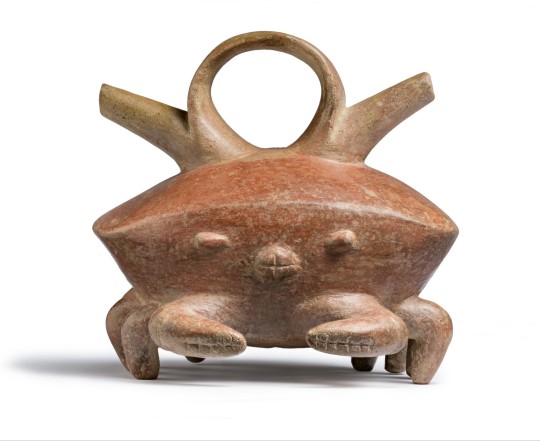

~ Crab Vessel with Double Spout.
Place of origin: Colombia, Calima Region
Period: Ilama Period
Date: 1500 B.C.-A.D. 100
Medium: Ceramics
#ancient#ancient art#history#museum#archeology#ancient history#archaeology#ancient pottery#pottery#south america#crab#crab vessel#calima#Colombia#pre columbian#Ilama Period#1500 b.c.#a.d. 100
16K notes
·
View notes
Text

#hmm yeah this one is iffy#as a major disclaimer I don't condone hitting children#I debated posting this one#but in the end I decided to go through with it#because maybe I should post some of the comics were Everett's behavior and morals don't hold up to typical modern morals#because I do think too many people on this site put him on a pedestal as an embodiment of the morals of your average Tumblr user#when he was a straight white man from 100 years ago so unfortunately some of the comics did not age so well#child abuse tw#fatphobia tw#just to be safe#image description in alt text#everett true#newspaper comics#the outbursts of everett true#transcribed#vintage comics#a.d. condo
14 notes
·
View notes
Text
Doing an Early Church study and they casually hit us with “the ten thousand martyrs [from a single city/location]” and “So many were killed on a single day that the axe, blunted and worn out by the slaughter, was broken in pieces, while the exhausted executioners had to be periodically relieved.”
Then you look it up and learn that, yes, the martyrdom of ten thousand people in Nicomedia is supported by historical documents and they can actually specify it likely happened in the year 303 A.D. under the beginning of Diocletian’s reign.
Historians estimate that between 250 and 311 A.D, 60,000 Catholics were martyred. That’s around 1,000 a year, or three a day, for SIXTY YEARS.
“✨We are the granddaughters of the witches you couldn’t burn.✨” Oh yeah? Well we’re the descendants of the Catholics you couldn’t kill. Of people who stood firm in the face of horrors beyond comprehension, who knew that hours or days of pain was nothing compared to the ecstasy that awaited them. I pray that I can have a fraction of their courage and dignity, a hint of their resolve and charity.
Holy martyrs, pray for us.
#catholic#catholicism#christianity#religion#catholic nerdstuff#martyrs#martyrdom#“Why are you Catholic?”#Because only one Church has endured for over 2000 years#Only one Church can trace their roots directly back to the apostles in an unbroken line of succession#Only one Church can look at documents written around 100 A.D. by students of the apostles themselves and say#‘Yes. This is what we teach and have taught from the very beginning’#Because only a Church that offers truth could’ve survived such horrific persecution when it had barely left infancy#Because it is only empowered by God that 100s of 1000s of men women and children could face persecution torture and death without flinching
9 notes
·
View notes
Text
NEW #PocketPrayers Psalm 100 & Psalm 23 #TenaciousTuesday June 27, 2023 A.D.
A charity brought me some clean linens yesterday and also gifted me with a lovely new little Gideon’s Bible that I really like. Thank you for listening and praying with me. Happy #TenaciousTuesday. I love you all. God bless you. Amen. Amen. Amen.
Psalm 100 and Psalm 23 from my new Gideon’s pocket Bible. Thank you, Love, INC.!
I am desperate. If you like the things at AxZilla.com and want to…
View On WordPress
#charity#GodBlessYou#HelpZilla#ILoveYou#PeaceBeWithYou#PleaseHitTheFreakingTipJar#PocketPrayers#Prayer#Psalm 100#Psalm 128#TenaciousTuesday#TheGoodening#amen#bleg#Gideon’s#I need help#June 27th 2023 A.D.#Love Inc.#NEW!#Psalms
1 note
·
View note
Text

Unknown, Dog with human mask
Late Formative period, c. 100 B.C.-A.D. 200, Ceramic
715 notes
·
View notes
Text
These were from two separate posts but I *NEEDED* them to be united
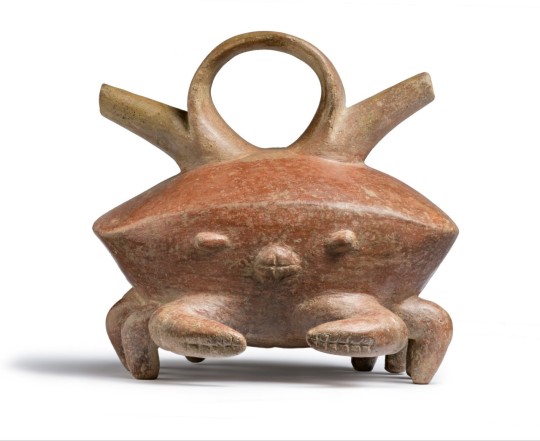
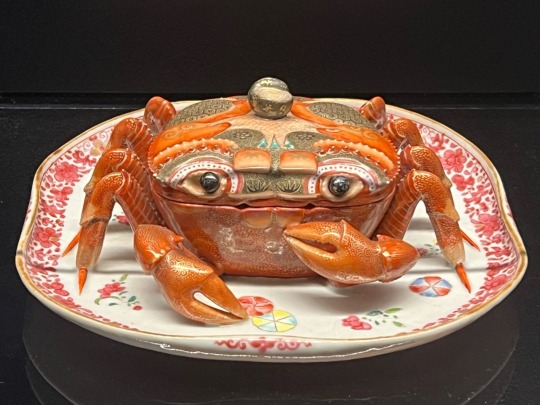
Ceramic Crab Vessel with Double Spout from the Calima Region Colombia, 1500 B.C.-A.D. 100. And Porcelain Crab Tureen from Jingdezhen, China, 1736-95.
Beautiful. Magnificent. Two artful hand-crafted serving containers whose creation was separated by at least 1500 years and the largest ocean on the planet. Both with the same glorious form.
Carcinisation is eternal
Original posts from @theancientwayoflife (x) and @hieronymusarchives (x)
#in which i say things#art#CRAB DISHES#honestly i love both of these as individual pieces of art and i wanted to see them next to each other
500 notes
·
View notes
Text
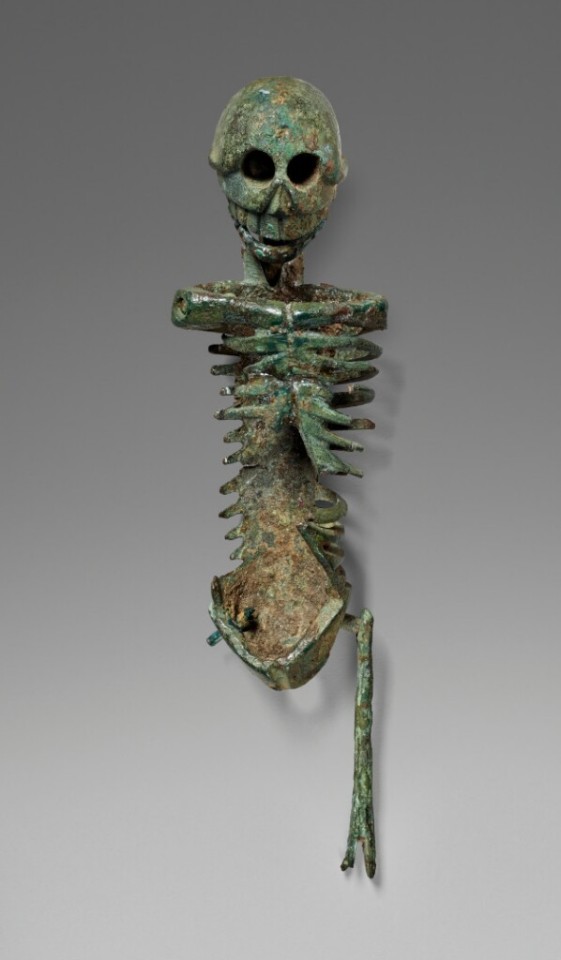
Miniature Skeleton
25 B.C.–A.D. 100
Unknown artist/maker
On view at Getty Villa, Gallery 211, The Roman Villa
564 notes
·
View notes
Text
Aziraphale’s Flaming Sword
get your mind out of the gutter - seriously it’s gonna get worse
i’m sure someone has already pointed this out and some meta post have been made but I just wanted to infodump about the actual history behind this sword so yeah

His sword is modeled after the Roman Gladius -or is it the other way around ;) - specifically the Pompeii version - so let’s just get into breaking this sword down
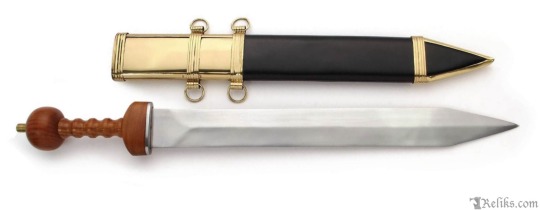
The Hilt
This type of sword has a three part hilt consisting of a pommel (which is used to counterweight the blade), a grooved wood grip (so your fingers fit better and thus have a stronger grip), and a guard (protects the hands from slipping onto the blade)
The Blade
For the Pompeii version of this sword it has double-edge sides that are parallel and come to a short, strong point - typically it would be made out of steel
Size
Usually ranged from 18-28 inches as it continually got smaller and smaller over the years
The History
(the most widely excepted one at least)
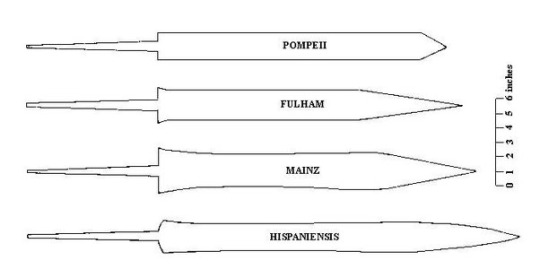
The Pompeii is actually one of the latest versions of the Roman Gladius so let’s go back to the beginning
The official origins of this sword have been up for debate but as for how it came under Roman influence that is credited to the Punic Wars in 3rd century B.C. (Republican Rome) - specifically to the Iberians who were allies to the Carthaginians and used a short sword that came to be called the “gladius Hispaniensis.” After the wars the Roman army (besides the cavalry) adopted these swords and began to make changes to better suit their needs.
Thus the Mainz-Fulham gladii came to be. It was their first attempts at making this devastatingly destructive sword the perfect sword for their use so they pretty much ended up retaining the shape (wasp-waisted) and only really making it shorter - mainly used to get through chainmail
Then the Pompeii version comes along with new parallel sides and a shorter tip - along with also making the whole sword smaller once again - mainly used to get through plate armor
This sword would then last the Roman legionary and auxiliary infantry until 2nd century A.D. when they are replaced with the spatha
But in the end this sword served the Roman Empire for more than three centuries, in both their Republic and Imperial times - that’s pretty damn impressive
Fighting Tactics

The Romans are pretty iconic for their tight formations and their Scutum shields
They also carried three different types weapons with them - couple of spears/javelins, a short sword, and a dagger. Obviously we are going to focus on the short sword
Soldiers actually wore their swords on their right side instead of their left because they were in such tight formation they didn’t have room to draw it across their body
With the exception for a Roman Centurion - who were commanders of a unit of about 100 soldiers and 60 of these guys(and their men) made up a Legion - as they wore their swords on the left
Now for what made the gladius so useful to the Romans was that it is mainly a thrusting sword - quick and efficient stabbing - which worked best with their formation but because it was also a double-edged sword it was great at cutting too if their formation ever broke
What they would do is while they were in their formations and trying to advance on the battleground they would take their sword and thrust it beside or above the shield - if they hit their target it more than likely resulted in a fatal injury. Though they weren’t above cutting their opponents at the knees - quite literally because if the opportunity arose they would lift their shields above them and slash at their knees.
It was all a very efficient way of fighting that served them well
obviously this is a very condensed version of a lot of history but it is the Human history behind Aziraphale sword
(and yes this is the type of sword the Roman soldiers have on them at Jesus’s crucifixion)
#quite literally just the history behind the sword#nothing else#good omens#good omens 2#aziraphale#aziraphale’s sword#good omens meta
243 notes
·
View notes
Photo

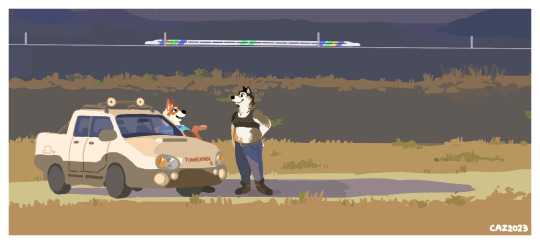
Yarragardee Basin, Mangala, 7995 A.D.
------------------------
Accompanying music: You’re On Fire by They Might Be Giants. Summer road trip music of all time, in my opinion.
Here’s a little expository write-up on the history and geography of the worlds shown here. Someday I’ll have more to show of the personal story of these two critters and their travels; until then, a more macro-level description.
------------------------
Mangala and its sister world Kahira (visible in the background) are binary planets, orbiting one another in a manner not entirely unlike that of Pluto and Charon in the Solar System. Mangala is a relatively small world - just about twenty percent the mass of the Earth, something like if you took two copies of Mars and smushed them together; it was a frozen, dusty, and arid place when transhumanity first established a permanent presence in the Tahoka system some four hundred years ago. Since those early days, terraforming using a Birchian soletta system (a huge but foil-thin Fresnel lens of mirrors, with a secondary focal lens for burning atmospheric gasses out of the regolith) has rendered it shirtsleeve habitable to baseline humans across much of the surface, although the global water inventory remains low* and the air in the “continental” uplands is stratospheric, with only the hardiest lichens establishing a foothold. Most of Mangala’s major metropolitan areas are located in the deep rift valleys and basins, where air pressure is highest.
Kahira, on the other hand, is arguably** too small for effective terraforming, having only a third the mass of its sister world (a little over the mass of Mercury). Some of its larger rift valleys and craters have been tented over, aerated, and planted with tall low-gravity forest and grassland, a style of habitat construction dating back to the first Mars colonists almost six thousand years ago. Industrial complexes and underground cities sprawl out across the bare surface of the moon, with huge low-gravity lava tubes seeing extensive urban development.
The Yarragardee Basin, pictured above, is a graben basin in Mangala’s northern hemisphere, notable for the historic industrial city of Tirupati - here we see two road-trippers between cities on the basin’s great plain, taking a break in the long late afternoon of a sunset-day***. Having stopped for a night at a motel near Tirupati’s aerospace complex, they’re now continuing their journey to the city of Redmond-Tonasket, located in the Woronora Valles trench system about two thousand kilometers to the southwest.
* While plenty of water could have been imported from Tiandonias’s cometary halo, it was decided not to do so in order to avoid inundating pre-existing cities in the valleys and deep basins. The extremely humid hothouse conditions that come after slamming dismantled ice moons through the stratosphere at over six kilometers a second were also broadly considered unacceptable.
** Smaller worlds have been terraformed in transhuman space, both by worldhouse and more open-air methods, but it’s largely the kind of thing that much more energy-rich systems do as a vanity project. Kahira may someday see blue skies, but likely not for a thousand years at least. (edit, one year later: I actually changed up some of this while simulating this system for stability. I’ll be posting more about this soon.)
*** Mangala and Kahira, being tidally locked to each other such that they always show one another the same face as they orbit their common center of mass, both have days exactly as long as their orbital periods - 403 kiloseconds, or roughly 112 hours. This is for convenience divided into month-weeks comprising four “circadian days” of 100 kiloseconds (~26 hours), with the remaining three kiloseconds added on to the last day of a month-week to keep synchronization.
548 notes
·
View notes
Text
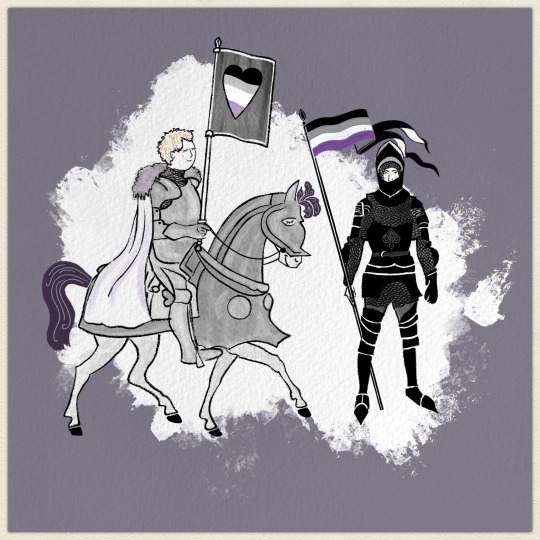
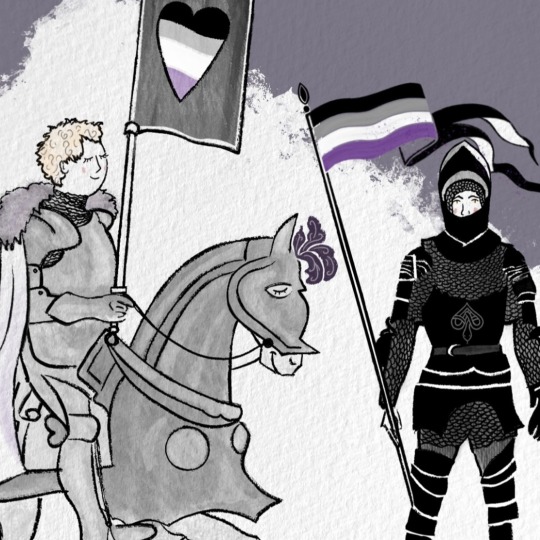
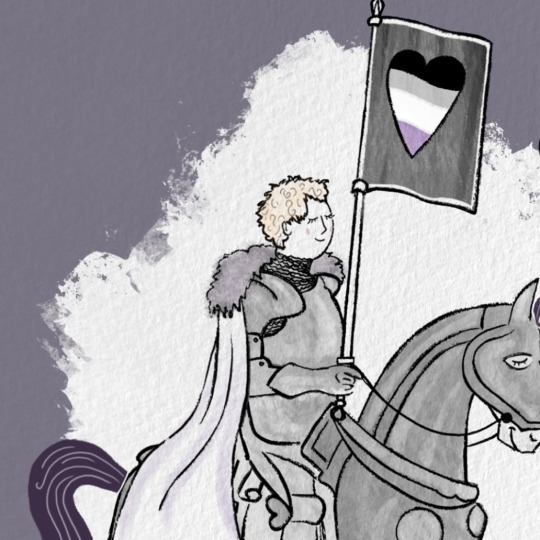
537 A.D., The Kingdom of Wessex
As it's Asexual Awareness Week, I had to draw a matching Ace Pride Aziraphale to the Crowley one I posted last week, and then put them together!
Crowley and Aziraphale share a beautiful, queer relationship that can be viewed in many ways, but to me, it's always 100% read as an asexual love story.
Ace representation is still hugely, hugely lacking and I think something I love so much about Good Omens is that it makes a lot of people - who often feel invisible, even sometimes in queer spaces or fandoms - feel seen and heard and accepted 🖤 💜♠️
#asexual awareness week#asexual representation#asexual relationship#asexual#asexual romance#ineffable husbands#crowley x aziraphale#aziracrow#aziraphale#crowley#good omens fanart#fan art#good omens#good omens 2#ace pride#ace representation
268 notes
·
View notes
Text


~ Pair of Architectural Reliefs with Elephants.
Date: A.D. 80–100
Culture: Roman
Place of origin: Western Roman Empire
Medium: Italian marble
#ancient#ancient art#history#museum#archeology#ancient sculpture#ancient history#archaeology#getty#western roman empire#roman#architectural relief#elephants#a.d. 80#a.d. 100#Italian marble
1K notes
·
View notes
Note
can you explain the "sexiness zone" acording to desitny-matrix.com its the two circle inbetween the comofrt zone and destiny zone but i cant find anything anywhere on it
i disagree with quite a bit of what destiny-matrix.com puts in its descriptors. the "sexiness zone" highlights the three numbers in the center of the web. this is your comfort zone; which i guess you can argue that being your true self is sexy but it is very uncommon that the core will tell if someone is attractive - only 3, 6, 15, or 18 in the core region would really illustrate that because the comfort zone is about your main personality traits and features. so think about someone like marilyn monroe who has 15 in her core and is a known sex symbol (which is 100% 15 energy, in my opinion)! if you want to really assess attractiveness, look here:

the leftmost number is how the world sees you. the first chakra (muladhara) is connected to the physical body. and the glow of the sixth chakra (ajna) tends to occupy the face.
-a.d.
click here for the masterlist
click here for more web of wyrd related posts
© a-d-nox 2024 all rights reserved
#astrology#astro community#astrology tumblr#tarotdaily#tarot witch#tarot art#daily tarot#rider waite tarot#tarot deck#tarot reading#tarot cards#tarot#tarotblr#tarotcommunity#matrix of destiny#matrix of fate#wyrd web#web of wyrd
72 notes
·
View notes
Text

2,000-Year-Old Roman Mausoleum Unearthed Near London Bridge
No burial artifacts were recovered from the structure itself, but the surrounding area yielded over 80 Roman burials containing copper bracelets, coins, glass beads and a bone comb.
A "completely unique," 2,000-year-old Roman mausoleum that has emerged from the rubble of a development site in central London is the most intact ever discovered in the U.K.
The monumental tomb — of which low walls, entrance steps and interior flooring remain — is bejeweled with two mosaics composed of small red tiles, each featuring a flower enclosed in concentric circles. More than 100 coins were also strewn across the tomb's floor.
Archeologists only found the second mosaic when they dug beneath the first one. This indicates the mausoleum floor was raised at least once while it was still being used for burials, they said.
The discovery, which is nestled within the city's central Southwark area, "provides a fascinating window into the living conditions and lifestyle in this part of the city in the Roman period," Antonietta Lerz, a senior archeologist at The Museum of London Archeology (MOLA), said in a statement.
Roman invaders under Emperor Claudius founded London, or Londinium, around 47 A.D. and ruled the city through to the early fifth century, when dwindling military resources and incursions across the rest of the empire forced their withdrawal from Britain.
The recent excavation bears the marks of this decline. "This relatively small site in Southwark is a microcosm for the changing fortunes of Roman London — from the early phase of the site where London expands and the area has lavishly decorated Roman buildings, all the way through to the later Roman period when the settlement shrinks and it becomes a more quiet space where people remember their dead," Lerz said.
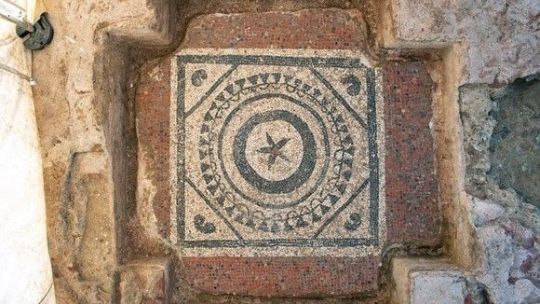

The mausoleum would have originally housed coffins and other burial artifacts, according to the statement, but none were recovered from the structure itself. However, the excavation site around the monument yielded Roman-era items belonging to more than 80 burials, including copper bracelets, glass beads, pottery and a bone comb.
Archeologists will now examine these recovered items to better understand central London's Roman past.
Only the wealthier members of society would have had access to the mausoleum, which may have been used as a family tomb or belonged to a "burial club," requiring a monthly fee to secure a future grave, according to the statement.


What remains of the structure indicates that it was a two-story building with large buttresses in the corners for support. The high walls were probably dismantled for reuse elsewhere during the medieval period. Inside, a raised platform cemented with pink mortar containing crushed bits of pottery and brick — a widely used Roman building material known as "opus signinum" — designates where the burials would have taken place around three sides of the mausoleum.
The discovery follows that of a 26 foot (eight meter) long Roman mosaic — the largest unearthed in London for more than 50 years — in February 2022. The newly excavated mausoleum will be put on public display once construction has concluded, according to the statement.
By Sascha Pare.


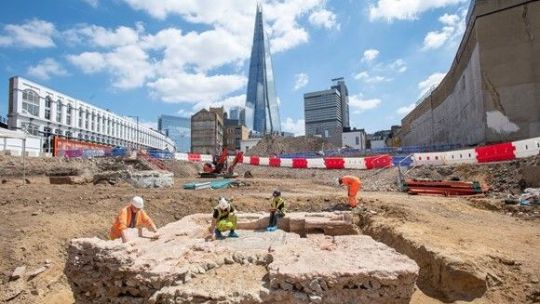
#2000-Year-Old Roman Mausoleum Unearthed Near London Bridge#roman mosaic#ancient grave#ancient tomb#ancient mausoleum#ancient artifacts#archeology#archeolgst#history#history news#ancient history#ancient culture#ancient civilizations#roman history#roman empire
327 notes
·
View notes
Text
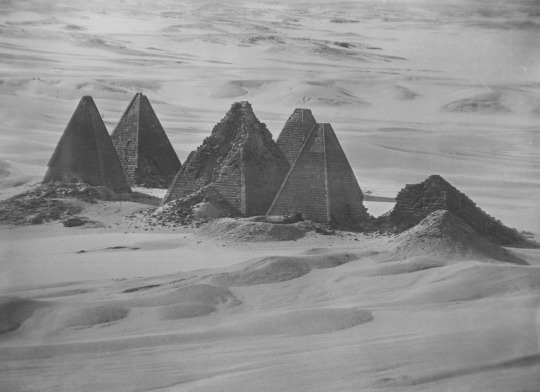
Nubian pyramids of the Meroitic period at Gebel Barkal. Photograph taken during the University of Chicago Expedition to Egypt and Sudan in 1906. The pyramids were built from about 100 B.C. to 150 A.D.
31 notes
·
View notes
Text

Bracelet with Isis Bust Finials
100 B.C.–A.D. 100
Unknown artist/maker
getty
80 notes
·
View notes
Text

part 5:
When the call went out to Greece’s greatest heroes, for fame and glory, to join Jason and his quest for the Golden fleece, only the bravest answered the call. Heroes like Hercules, Orpheus, Telamon, Peleus, and yes, Atalanta mustered her courage and journeyed to join them.
Appollonius of Rhodes wrote the epic poem “Argonautica” about Jason’s quest for the golden fleece around the 3rd century B.C. based on a much older tale, (referenced in Homer and Pindar). Apparently Appollonius elevated the romantic relationship between Jason and Medea, which in turn inspired latin poetry and Virgil’s Aeneid. In Appollonius tale, Atalanta shows up to join the Argonauts, but Jason turns her away, fearing having such a beautiful woman on board would cause conflict between his men. However, In Appollodorus “Library” (1-2nd century A.D.) he lists Atalanta as being one of the heroes who accompany Jason for the Golden fleece. Unfortunately, there are no surviving versions where we see the entirety of the journey with Atalanta involved, which begs the question; what would the adventure be like if Atalanta joined?
On the topic of sea quests, lets take a quick look at ancient Greek seafaring. The Argo ship is portrayed as a sort of Trireme (ancient warship with three rows of oars and curved prow). Developments in astronomy helped ancient sea sailors navigate through constellations like Ursa Minor (little dipper) , as well as moon cycles and eclipses. They also used “sounding weights” to measure sea depths, which helped to inform distances to land. There is evidence from around 100 B.C. of an ancient “Orrery” (solar model) tool for celestial navigation called the Antikythera Mechanism. This ingenious, hand-powered device contained gears and could predict and track astronomical positions and eclipses.
Thanks for looking and reading! :D To see more of my Greek myth illustrations: https://linktr.ee/tylermileslockett
#tagamemnon#mythology tag#greekmyths#pjo#percy jackson fanart#percy jackon and the olympians#percyjackson#classical literature#dark academia#classicscommunity#atalanta#artemis#ephesus#aphrodite#goddess#greek#roman#ancient greece#argo#argonautica#medea#calydonian boar#rhea#heroine#archer#ancient wonder of the world#7 wonders#temple of artemis#argonauts
815 notes
·
View notes